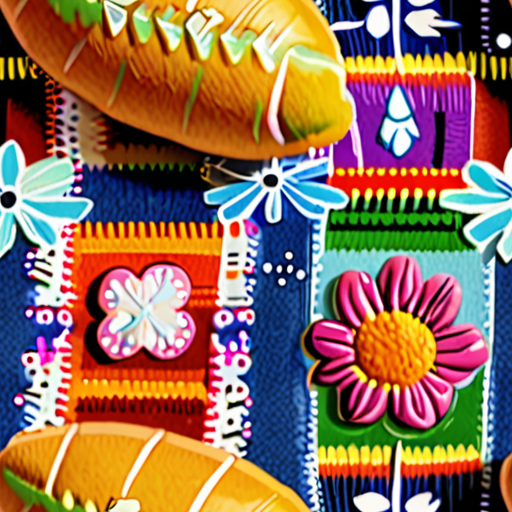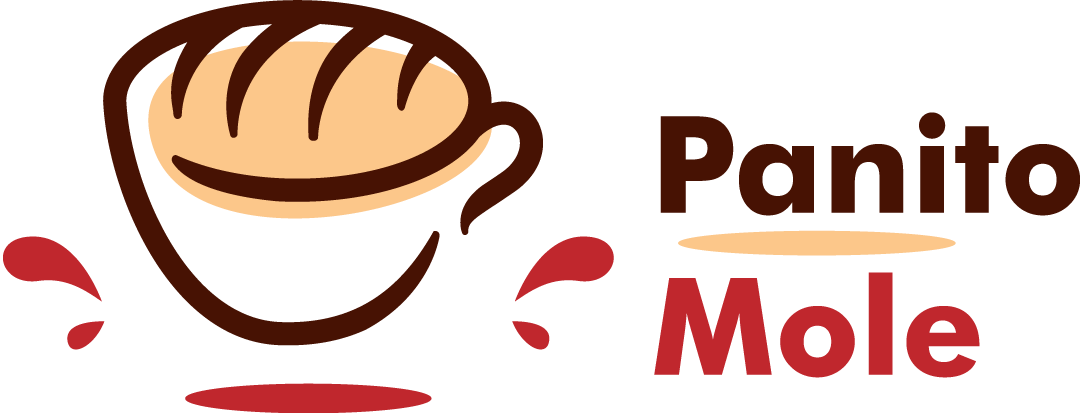When it comes to traditional Mexican sweet bread, few treats are as iconic and beloved as the colorful concha. These vibrant, ring-shaped pastries are a staple in many Latin American countries, often topped with a variety of sweet glazes and sprinkles that add to their visual appeal. But what makes conchas truly special is the unique combination of texture and flavor they offer – soft, fluffy interiors giving way to crispy, golden exteriors, all wrapped up in a delicate balance of sweetness and savory notes.

Why Are Conchas Different Colors?
The vibrant colors of conchas, a type of Mexican sweet bread, have captivated many with their beauty and variety.
- Traditionally, concha crusts are made with a combination of fat, sugar, and flour, resulting in a delicate balance of flavors and textures.
- The colors of conchas can vary depending on the recipe and personal preference, but the most common hues are white vanilla, brown chocolate, and pink.
Pink conchas, in particular, have gained popularity due to their unique flavor profiles and visually appealing appearance.
- White Vanilla Conchas: These classic conchas are made with vanilla extract and often topped with a sprinkle of sugar, giving them a sweet and subtle flavor.
- Brown Chocolate Conchas: Rich and decadent, these conchas are infused with the deep flavors of dark chocolate, perfect for satisfying any chocolate craving.
- Pink Conchas: Whether flavored with strawberry or simply dyed with food coloring, pink conchas add a pop of color and sweetness to any breakfast or snack routine.
At Panito Mole, we’re passionate about sharing the rich traditions and flavors of Mexican cuisine, including the delightful world of conchas.
Whether you’re a seasoned baker or just discovering the joys of conchas, our recipes and guides are here to inspire you to create delicious treats that showcase the beauty and diversity of Mexican sweets.
So why not try making your own conchas at home? With a few simple ingredients and some practice, you’ll be enjoying these colorful treats in no time!
Why Are My Conchas Not Fluffy?
As a passionate baker of traditional Mexican sweet bread, I’ve encountered my fair share of concha-related struggles.
- One common issue that can affect the fluffiness of conchas is overmixing the dough.
- When you mix the ingredients too much, the gluten in the flour develops, leading to a dense and tough texture.
- To avoid this, try mixing the wet and dry ingredients separately before gently combining them.
Tips for Achieving Fluffy Conchas:
- Make sure to use the right type of flour – bread flour or all-purpose flour with a high protein content will give you better results.
- Don’t overproof the dough – let it rise until it’s almost doubled in size, then punch it down and shape it into balls.
- Use the right temperature and humidity levels when proofing the dough – a warm and draft-free environment will help the yeast ferment properly.
- Fold the dough gently when shaping the conchas – this will help preserve the air pockets and prevent the dough from becoming dense.
Common Mistakes to Avoid:
- Not letting the dough rest long enough between rises – this can cause the yeast to become exhausted and the dough to collapse.
- Overbaking the conchas – this will cause them to dry out and lose their fluffiness.
- Not using the right type of sugar – granulated sugar can make the conchas taste bitter, while brown sugar adds a richer flavor.
By following these tips and avoiding common mistakes, you’ll be well on your way to baking deliciously fluffy conchas that will impress anyone who tries them!

Difference Between Pan Dulce and Conchas
Pan dulce and conchas are two popular types of sweet bread in Mexico, but they have distinct differences in terms of ingredients, texture, and taste.
-
Ingredients:
- Pan dulce typically consists of flour, sugar, yeast, eggs, butter, and milk, whereas conchas often include additional ingredients like lard, anise seeds, and orange blossom water.
- Pan dulce may also contain nuts, dried fruits, or chocolate chips for added flavor and texture.
-
Texture:
- Pan dulce has a soft, fluffy interior and a crispy exterior, while conchas have a denser, chewier texture due to the presence of lard and anise seeds.
- Conchas often develop a crunchy, caramelized crust during baking, which adds to their texture and flavor.
-
Taste:
- Pan dulce has a mild, sweet flavor, while conchas have a more pronounced sweetness and a hint of anise or orange blossom water.
- The combination of ingredients in conchas creates a complex, aromatic flavor profile that sets them apart from pan dulce.
-
Appearance:
- Pan dulce can take various shapes and forms, from simple rounds to intricate designs, while conchas are typically shaped into rings or balls with a distinctive “shell” pattern.
- The shell pattern on conchas is created by pressing anise seeds or other toppings onto the dough before baking, giving them a unique appearance.
In summary, while both pan dulce and conchas are delicious types of sweet bread, they differ significantly in terms of ingredients, texture, taste, and appearance.

Why Conchas Can Be So Affordable
As a lover of traditional Mexican pastries, I’ve often wondered why conchas can be found at such affordable prices.
- The truth behind conchas’ affordability lies in their production process.
- Many bakeries use a mixture of ingredients, which can include cheaper alternatives to traditional ingredients.
- Some bakeries may also opt for oil instead of butter, reducing costs further.
- Another factor contributing to conchas’ affordability is the use of white flour, which is generally less expensive than whole wheat flour.
- Additionally, mass production and economies of scale play a significant role in keeping conchas priced low.
In contrast, artisanal bakeries that use high-quality ingredients and traditional methods may charge more for their conchas due to the increased cost of production.
However, it’s worth noting that many Latinx-owned bakeries are revamping the traditional concha recipe, incorporating fresh ingredients and innovative techniques to create unique flavor profiles.
These bakeries may charge slightly higher prices for their conchas, but the added value lies in the quality and care that goes into crafting each pastry.
For those looking to try authentic Mexican pastries without breaking the bank, consider visiting local bakeries or trying store-bought options made with wholesome ingredients.
By supporting small businesses and choosing high-quality products, we can enjoy delicious conchas while also promoting fair trade practices and sustainable agriculture.
At Panito Mole , we’re passionate about sharing the rich flavors and traditions of Mexican cuisine with our community.
From classic conchas to innovative twists, our recipes and guides are designed to inspire home cooks and bakers alike.
Join us on this culinary journey and discover the magic of Mexican pastries!
Concha Nutrition Facts
As a lover of traditional Mexican pastries, I’m often asked about the nutritional value of conchas.
- Sugar Content: Conchas are made with a significant amount of sugar, which can be detrimental to our health if consumed excessively.
- Calories: A single concha can range from 200 to 400 calories, depending on the size and ingredients used.
- Fat Content: While conchas are relatively low in fat, they can still contribute to weight gain and other health issues if eaten in large quantities.
- Sodium Content: Some commercial conchas may contain high amounts of sodium due to added preservatives and flavor enhancers.
- Cholesterol Content: Conchas typically contain minimal cholesterol, making them a relatively safe choice for those with heart health concerns.
Health Risks Associated with Consuming Conchas
While conchas can be enjoyed in moderation, excessive consumption can lead to various health problems, including:
- Weight Gain: Regularly eating conchas can lead to weight gain due to their high calorie and sugar content.
- Dental Problems: The high sugar content in conchas can contribute to tooth decay and other dental issues if good oral hygiene practices are not followed.
- Increased Risk of Chronic Diseases: Consuming high amounts of sugar and refined carbohydrates found in conchas may increase the risk of developing chronic diseases like diabetes and heart disease.
Nutritional Tips for Enjoying Conchas
If you’re a fan of conchas, consider these nutritional tips to enjoy them in a healthier way:
- Choose Smaller Portions: Opt for smaller conchas or share a larger one with friends and family to reduce overall calorie intake.
- Select Lower-Sugar Options: Look for conchas made with less sugar or try baking your own using alternative sweeteners.
- Pair with Nutritious Foods: Balance out the nutritional drawbacks of conchas by pairing them with nutrient-dense foods like fruits, nuts, or cheese.

Conchas in English
We’re often asked what our delicious Mexican sweet breads are called in English, and today we’ll explore the term “concha” and its translation.
-
Definition of Concha
A concha is a type of sweet bread that originated in Mexico, characterized by its soft, fluffy interior and crispy exterior. The name “concha” literally translates to “shell” in Spanish, which refers to the bread’s shape and texture.
-
English Translation
In English, conchas are commonly referred to as “sweet bread rolls” or simply “concha bread.” However, the most widely accepted translation is “Mexican sweet bread.”
-
Cultural Significance
Conchas hold a special place in Mexican culture, particularly during holidays and celebrations. They’re often served as a breakfast item, topped with butter, jam, or honey, and are a staple in many Mexican households.
-
Conclusion
In conclusion, conchas are a beloved Mexican sweet bread that has gained popularity worldwide. Whether you call them concha bread, sweet bread rolls, or Mexican sweet bread, these delicious treats are sure to satisfy your cravings and leave you wanting more.

0 Comments